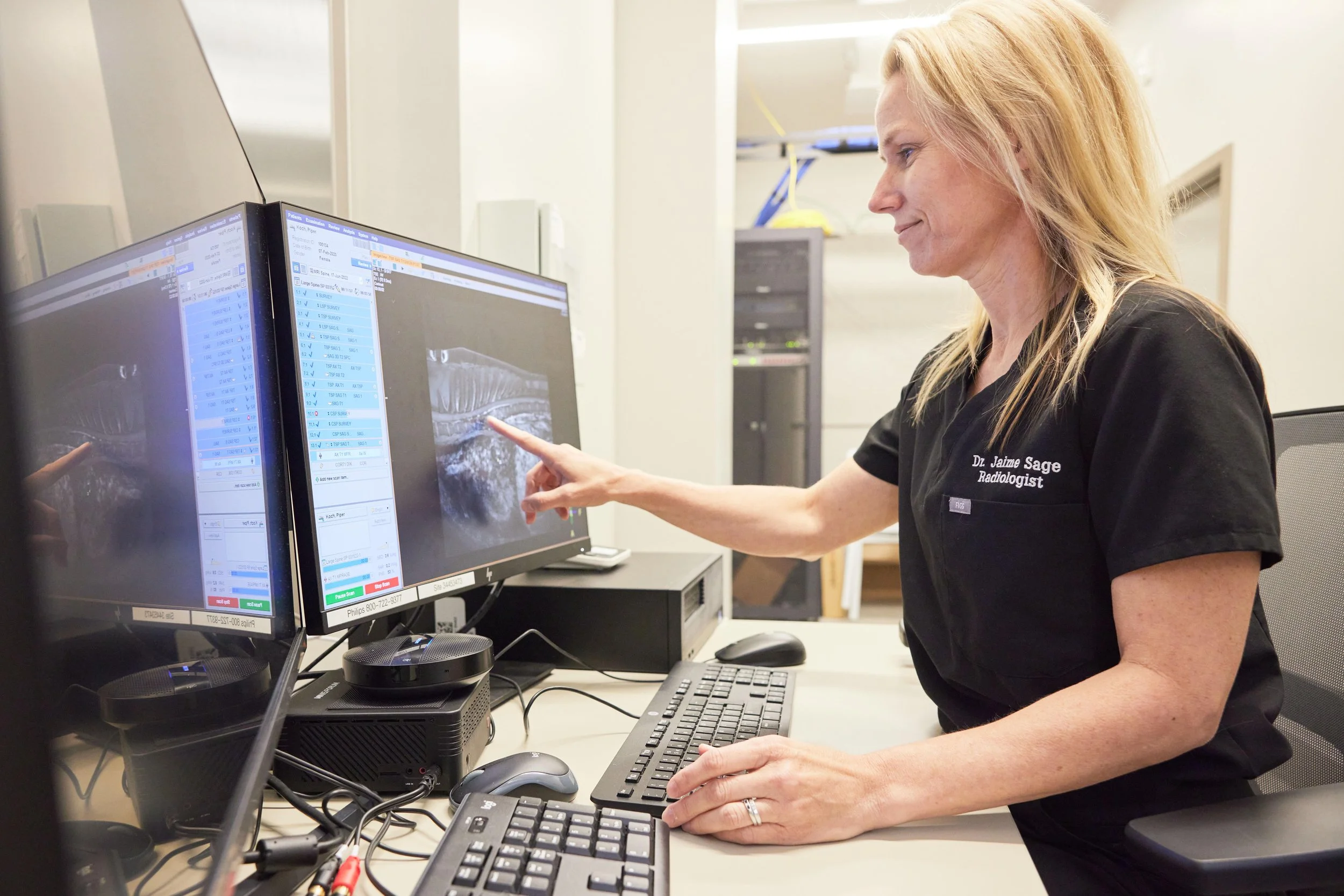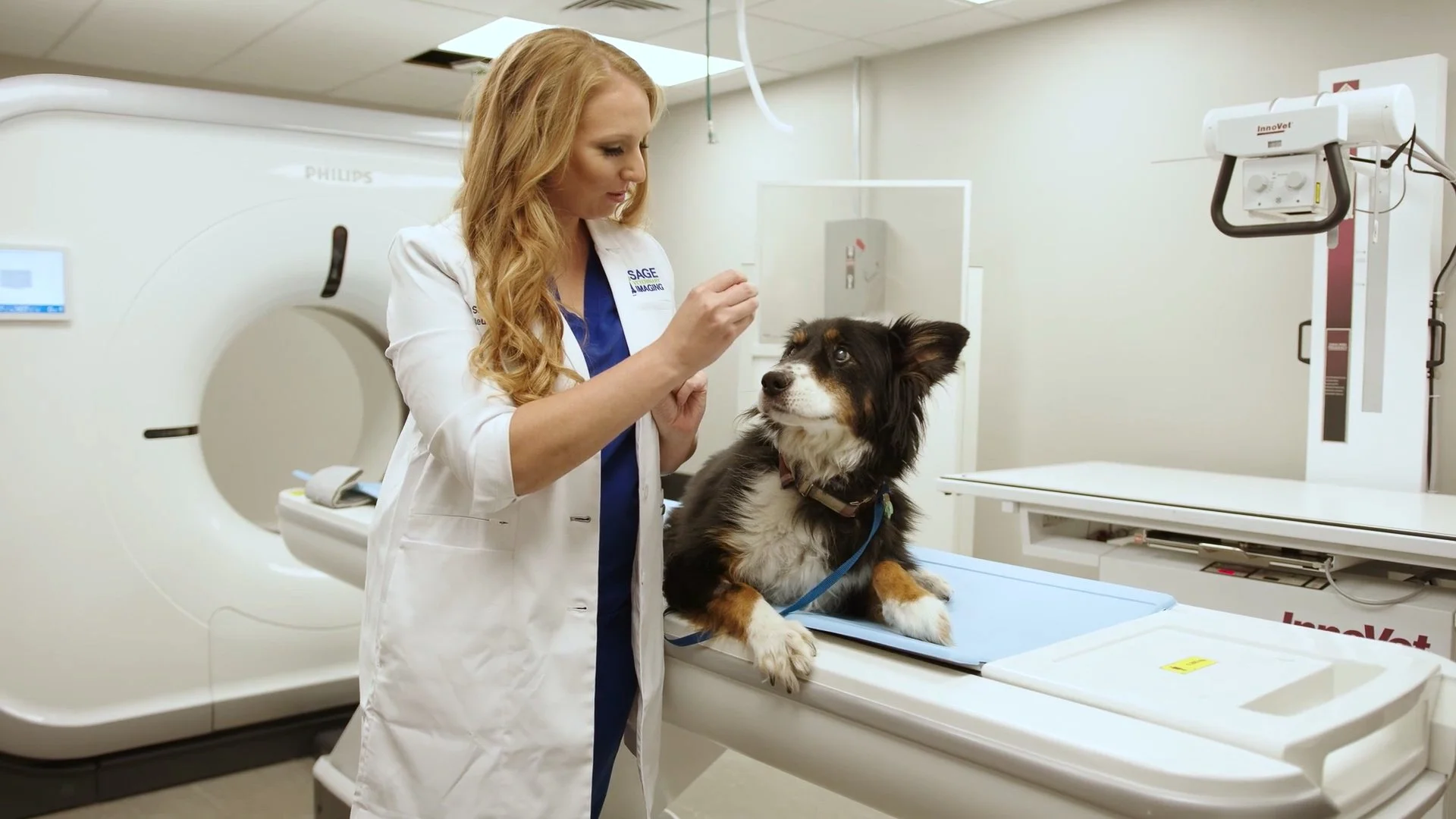Q&A With a Vet: Computed Tomography (CT)
We get a lot of questions about our services. No surprise, considering the number of different types of equipment we have! To help our current and future patients, we are adding Q&A With a Vet to our blog posts. You have the chance to hear from a doctor on exactly what we do and what to expect for your pet.
This week, we cover computer tomography, aka CT. Some of the most common questions and answers about CT are here. And you get a glimpse of what’s to come if your pet needs a CT scan.
Ultimately, at Sage Veterinary Imaging, we are here to help you find answers for your pet. For more information about CT scans for dogs, you can read more in our Ultimate Guide to CT Scans. But for now, dive right into our vet’s answers to your burning questions about CT scans for pets below.
Q: What is CT for pets?
The term “computed tomography,” or CT, refers to a computerized x-ray imaging procedure. During a CT scan, a narrow x-ray beam is aimed at a patient and quickly rotates around the body. This produces signals and the machine’s computer receives the signals and generates cross-sectional images, or “slices.” These slices are called tomographic images and can give a clinician more detailed information than conventional x-rays.
Once several successive slices are collected by the machine’s computer, they can be digitally “stacked” together to form a 3D image of the patient that allows for easier identification and more detailed evaluation of basic structures as well as possible tumors, disease, or other abnormalities.
Q: What can a veterinarian see during a CT scan?
Muscle and bone disorders, like tumors and fractures are not as apparent on radiographs (x-rays)
Certain neurological diseases and malformations, such as calcified disks, malformations of the spine, and infections of the bones and discs of the spine
Pinpoint the presence and/or location of a tumor, infection, or blood clot
Guide procedures such as surgery, biopsy, and radiation therapy, as well as more advanced techniques such as 3D printing
Detect and monitor the progression of diseases and conditions such as cancer, heart disease, lung disease, and liver masses
Monitor the effectiveness of certain treatments, such as cancer treatment
Detect internal injuries and internal bleeding
Q: What happens during a CT scan?
Your pet will be dropped off and spends the day with us. Depending on the nature of the scan, patients are either sedated or (occasionally) undergo full generalized anesthesia so that they are completely still for the scan. They are then positioned on the CT, and the area of interest is scanned.
Due to the advanced nature of our 128-slice CT scanner, scans finish quickly - in a matter of seconds! Because of the speed of our CT scanner, pets often don’t need anesthesia, but this is determined by our doctors during your pet’s initial exam. You will be asked to sign an anesthesia consent form if necessary.
Q: Will my pet be anxious without me?
The majority of pets do great. While your pet is here, they will be given anti-anxiety and sedative medications to help them relax, reduce stress during the day, and be still for imaging.
Q: When will I know the results of the scan?
Normally results are given to owners and their primary veterinary hospitals within 24 hours of the scan. Our radiologists examine all of the images, type up a report, and email it to your primary veterinarian. A copy is available to you, the owner, upon request.
Where to Find CT Scans for Dogs in Texas or Utah
When your pet is acting differently and showing signs of distress, it may need a CT scan. And we know you only want the best for your animal. With a higher slice count scanner like the 128 slice CT at Sage Veterinary Imaging, the radiologists, surgeons, and veterinarians are able to see more of your pet’s complete health profile. Our goal is to make the most informed decisions to help your pet.
Sage Veterinary Imaging has been operating in Round Rock, Texas for 8 years. With a new location in Sandy, Utah, and more on the way, we are here to help get answers for your pet.
Founder, Dr. Jaime Sage
Dr. Jaime Sage received her veterinary training at Texas A&M. After completing a radiology residency, she received further training as an MRI specialist with Patrick Gavin, Ph.D., DACVR/RO, one of the early pioneers of veterinary MRI.
Dr. Sage is currently president of the CT & MRI Society at the American College of Veterinary Radiology (ACVR) and has issued over 20,000 MRI reports in the past 15 years. She lectures frequently at meetings and conferences worldwide.
For more information on where to find CT scans for dogs in Texas or Utah, go to our Contact Us page to learn more.




